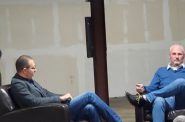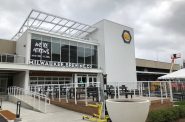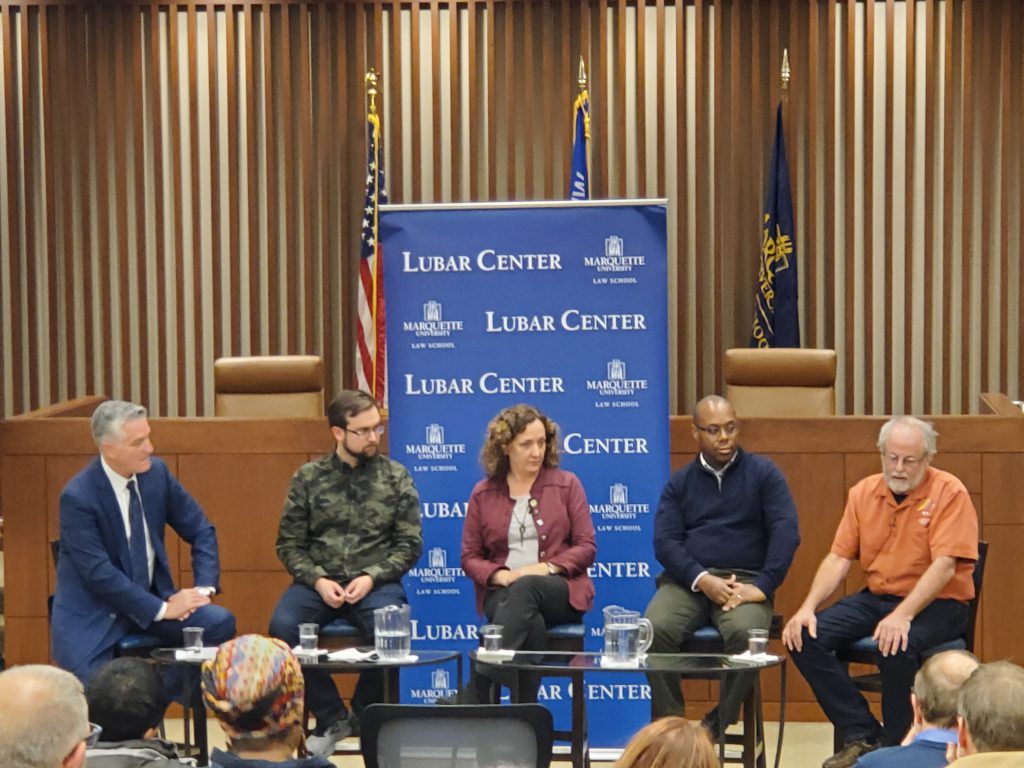Can The Midwest Be An Innovator?
Or are places like Milwaukee too humble to succeed? Expert panel discusses region’s potential.
From Aaron Gillum’s vantage point, one of this region’s oft-cited attributes serves as a handicap when it comes to fostering innovation.
“One thing the Midwest has — and I’m trying to change — is people are very humble,” said Gillum, senior vice president of 50 South Capital, which manages two seed programs for startup companies in the nearby states of Illinois and Indiana.
Gillum was one of four panelists who sat down with Milwaukee journalist Mike Gousha for his “On the Issues” series at Marquette University on Tuesday and discussed what goes into creating a healthy innovation economy.
“Innovators exude confidence,” Gillum said. “We don’t do that in the Midwest. We’re humble about our successes.”
While innovation culture is often associated with the coasts — Silicon Valley, in particular — Gillum said there are a number of reasons to be optimistic about the long-term prospects of innovation in Wisconsin and the Midwest.
The San Francisco area, for example, may lay claim to being the birthplace of a number of innovative startups, but Gillum said one handicap — real estate costs — bodes well for a number of other areas, including Milwaukee, where the capital required to run operations often is less costly.
“That’s not good for returns, that’s not good for scaling companies,” Gillum said of costs in the Bay area. He pointed out an emerging trend of companies opening second offices elsewhere, beyond the California coast, once a growth trajectory takes place.
But within the walls of Milwaukee and other so-called fly-over cities, the panelists agreed innovation has germinated, particularly in more recent years as organized networking events such as this week’s Startup Milwaukee continue to take place.
Gallagher said startups should look at truly novel business concepts, not attempting to one-up established businesses, such as the next ride-sharing app.
“Let’s do something no one else did,” Gallagher said. “It’s easier to compete at high levels, rather than at low levels.”
Gillum offered similar sentiments, noting that innovators in any city have the opportunity to play a role in solving problems specific to a locality.
He pointed to Chicago, which has grappled in recent years with high rates of gun violence, as an example of a city that could benefit from innovative ideas around the issue.
“What are the problems out there that we can use tech to fix?” Gillum said.
The availability of venture capital and other funding sources has been cited as a crimp for Milwaukee and other Midwestern cities. Gousha asked the panelists if this perception was indeed true.
“I believe the issue is much more human capital than anything else,” said Johnson, who said he aspired to bring resources to all areas of the state — not just Milwaukee and Madison — through mechanisms such as Badger Funds. “We’re trying to get some diversity in the state and have venture capital all around us.”
While the Midwest could be at a disadvantage in some respects, Cordio said he believes startups with truly solid proposals stand the best chances of long-term success, regardless of where their roots are laid.
“The ones who are doing novel things are able to attract the capital,” Cordio said.
If you think stories like this are important, become a member of Urban Milwaukee and help support real independent journalism. Plus you get some cool added benefits, all detailed here.
Startup City
-
Why Marathon Machines Moved Here
 Nov 15th, 2019 by Dave Fidlin
Nov 15th, 2019 by Dave Fidlin
-
City Must Embrace Change, Tech Expert Says
 Oct 31st, 2018 by Dave Fidlin
Oct 31st, 2018 by Dave Fidlin
-
8 Events To See at Startup MKE
 Oct 26th, 2018 by Zach Komassa
Oct 26th, 2018 by Zach Komassa






















I have attended several events like this one recently. I am trying to understand where those who see the world differently than I might connect. For instance, I attended two of the Foxconn events, one at WE Energies Across from Zeidler Park and one at the Pfister Hotel. At each were a room full of mostly while males, eyes full of dollar signs, looking for a piece of the action. They want to have an income that supports their living and their employee’s living. Also in this category was the event at UWM concerning putting Milwaukee on the national stage through the media pull of the DNC. Again the emphasis was on what more dollars can come to Milwaukee through more and bigger conventions. There was a brief mention of benefit to neighborhoods, though very “trickle down”. Most of Milwaukee lives in neighborhoods. Many have challenges that seem never to be reached by big events and commercial development downtown and if it does there is not much protection from gentrification.
Now at the Marquette event on “Creating an Healthy Innovation Economy” I finally got the courage to ask what happens when Mother Nature’s message finally gets through- perhaps the hard way. These well meaning folks live in a flat earth mentality and we are heading off the edge of their flat earth. We live on a beautiful, abundant round earth that gets its life from rotating around a star. All life is made of the dust of previous stars. How can we learn to shine? What does “healthy” mean?
I asked what happens when the marvelous story of the over the road truck driver who invented a battery power pack to save money for his children’s education; who became an entrepreneur inventor with more than enough money for his goal; what happens when we can no longer haul our goods across county on eighteen wheelers? What happens when the start up at Purdue University producing tomato seeds that can grow in the desert hits the reality of water that we see in the Colorado River and the Aral Sea story; that we see in the story of the inability of farmers in Syria to grow food that brings the growth of ISIS and all that contains with its mushrooming cloud of world wide disruption.
When will investing be investment that brings more than short term, ten years, they said for most, multi millions to a few and that then spread out to a few more new millionaires. What is our goal here? Is the tomato seed to grow food or to make money? Statistically, worldwide, most local food is grown locally by women. There are ways to invest in them like Kiva. What happens if that tomato seed creates an export industry in the desert of Syria that enslaves the local population to a global enterprise? What will those enslaved people eat? Is this the world we are creating with our investment dollars?
How about investments that are truly long term, that need to happen in the next ten years according to the IPCC and The National Climate Assessment? There are ways to invest locally through groups like Find Milwaukee. There are models described in an article from Ecofarming Daily: “Instead of buying stocks in distant companies, the public can invest close to home in a local farm or business through a mechanism called a Direct Public Offering, or DPO. Unlike investors in the stock market, these buyers do not have to be accredited to invest in a DPO, and no minimum investment is required…In 2012, President Obama signed into law the JOBS Act — Jumpstart Our Business Startups — which established a legal framework for DPOs. It took until last year for the SEC (Securities and Exchange Commission) to work out the details. Now 34 states have created their version of the rules for local investment.”
There are ways to invest in abundance for our healthy local economy. The answer to my question at the Marquette event on Start Up investment was that such investments will happen when there is interest in them. I write this in the hope of sprinkling angel dust, star dust, on these resilient ways of investing. There is really no other alternative to longer term Return on Investment! The earth is not flat!! Let’s stop acting that way!
reference:
https://www.ecofarmingdaily.com/farm-management/buying-farmland-without-wall-street/?utm_source=Acres+U.S.A.+Community&utm_campaign=c37690b728-EFD+11-11-19+BuyingFarmlandWithoutWallStreet&utm_medium=email&utm_term=0_65283346c2-c37690b728-184724313&goal=0_65283346c2-c37690b728-184724313&mc_cid=c37690b728&mc_eid=3548ce9d71